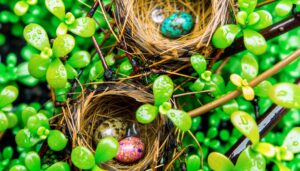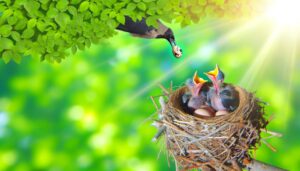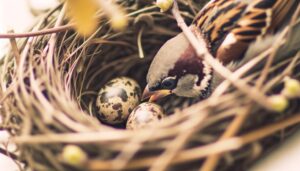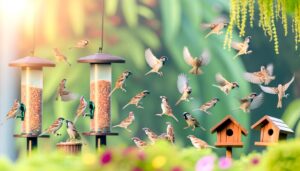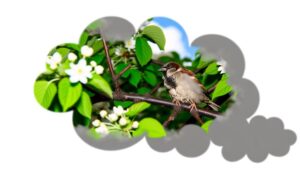3 Simple Tips to Attract Sparrows to Your Bird Feeder
To attract sparrows to your bird feeder, offer a blend of seeds such as white millet, cracked corn, and sunflower seeds. Position the feeder at a height of 5-6 feet in a sheltered area to protect from predators and harsh weather.
Use feeders with multiple perches, and maintain hygiene by cleaning them regularly. Provide fresh water in shallow birdbaths near the feeder, replenished daily.
Additionally, create shelter with dense shrubs or trees. Ensuring these elements replicate their natural foraging and nesting habits will increase their visits.
For further insights into optimizing your feeder setup, continue exploring these strategies.
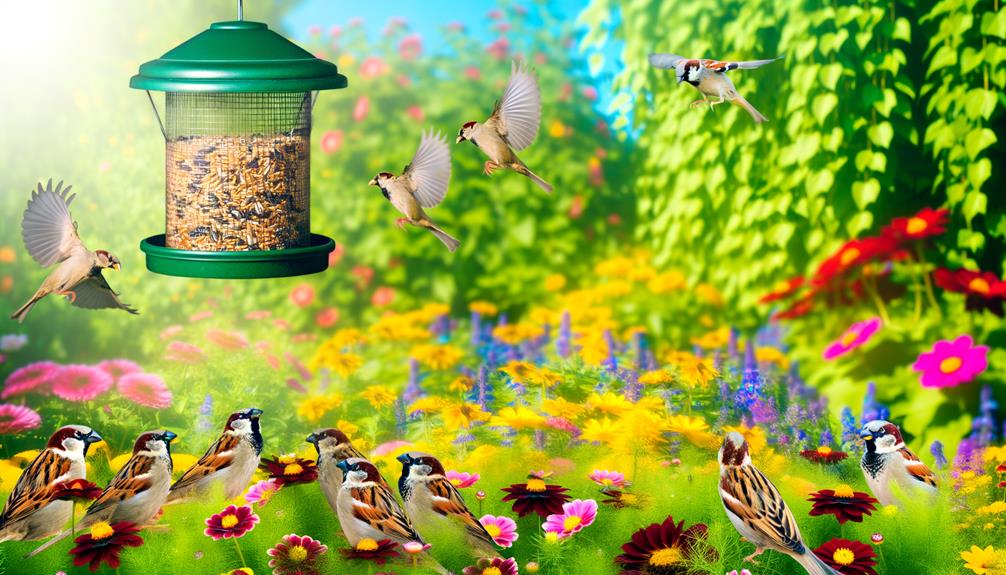
Key Takeaways
- Use seeds like white millet, cracked corn, and sunflower seeds to attract sparrows.
- Position the feeder at 5-6 feet height and near dense vegetation for security.
- Choose tube or hopper feeders with multiple perches suitable for sparrows.
- Provide fresh, shallow water daily and keep it clean to attract sparrows.
- Maintain cleanliness by disinfecting feeders weekly and cleaning the ground daily.
Choose the Right Feed
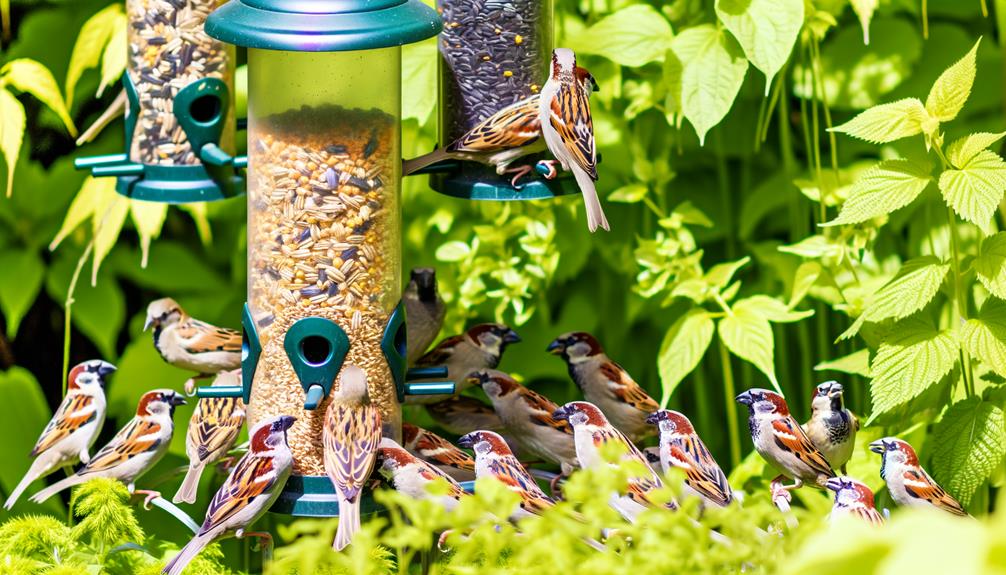
Choosing the appropriate type of feed is crucial for successfully luring sparrows to your bird feeder, as these birds have specific dietary preferences that must be met. Sparrows mainly prefer seeds, with a notable preference for white millet, cracked corn, and sunflower seeds. Scientific studies indicate that high-energy, nutrient-rich seeds are important for their metabolism, especially during breeding and molting seasons. Incorporating a mix of these seeds can enhance the attractiveness of your feeder.
Additionally, sparrows consume small insects and larvae, which provide necessary proteins. Offering a balanced diet that mimics their natural foraging can significantly improve the chances of attracting these birds. Ensuring the availability of fresh, clean feed will also prevent spoilage and disease, fostering a healthy feeding environment.
Set Up the Feeder
After selecting the best feed, the next step involves strategically setting up a feeder that caters to the behavioral and environmental needs of sparrows.
Position the feeder at a height of 5-6 feet to deter ground predators and confirm it is in a sheltered location, away from strong winds and excessive sun.
Sparrows prefer feeders with multiple perches, such as tube feeders or hopper feeders. Ensure the feeder is easily accessible for cleaning to maintain hygiene and prevent disease.
Additionally, placing the feeder near shrubs or dense vegetation provides sparrows with a sense of security and quick escape routes from predators.
To optimize visibility and attractiveness, avoid placing the feeder too close to windows to prevent collisions.
Provide Fresh Water
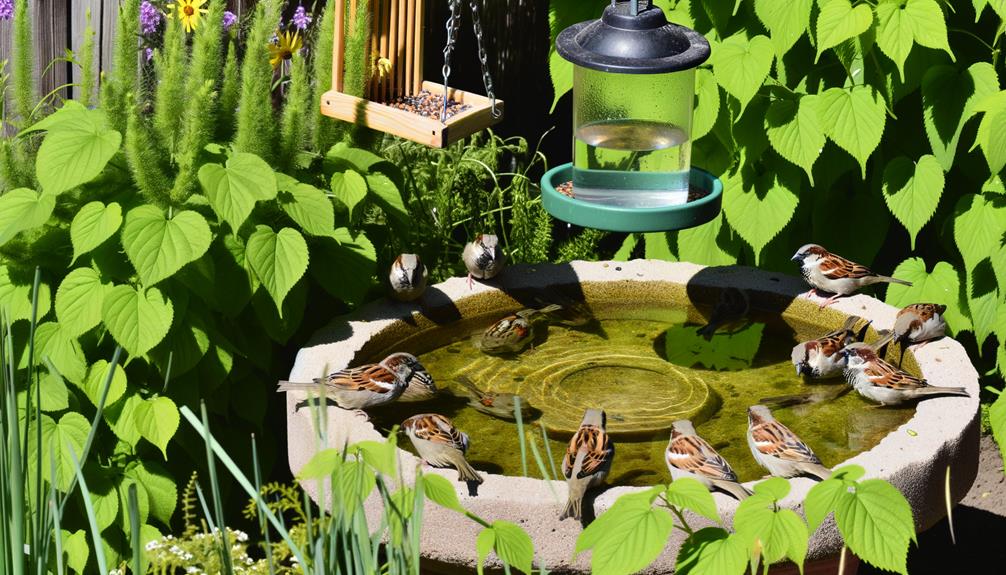
Providing a steady source of fresh water is crucial for attracting sparrows, as it fulfills their hydration needs and encourages regular visits to the feeder. Water is vital for sparrows not only for drinking but also for bathing, which aids in maintaining their plumage.
It is recommended to use shallow birdbaths, ideally no deeper than 2 inches, to accommodate their small size. Make sure the water is clean and replenished daily to prevent stagnation and the growth of harmful bacteria.
Placing the birdbath near the feeder but in a shaded area can help keep the water cool and fresh longer. Additionally, consider adding a dripper or fountain to create gentle water movement, which can be more appealing for sparrows.
Create Shelter
Creating shelter is vital for attracting sparrows, as it provides them protection from predators and harsh weather conditions, thereby promoting their prolonged presence around the feeder.
Sparrows prefer dense shrubs, trees, or artificial structures like birdhouses strategically placed near food sources. Evergreen trees and thick hedges provide year-round cover, which is especially beneficial during winter months.
Positioning shelters at different heights can accommodate various sparrow species' nesting preferences. Make sure that the selected plants or structures resemble natural habitats, providing plenty of hiding spaces and nesting sites. Avoid crowded areas that might attract predators.
Maintain Cleanliness
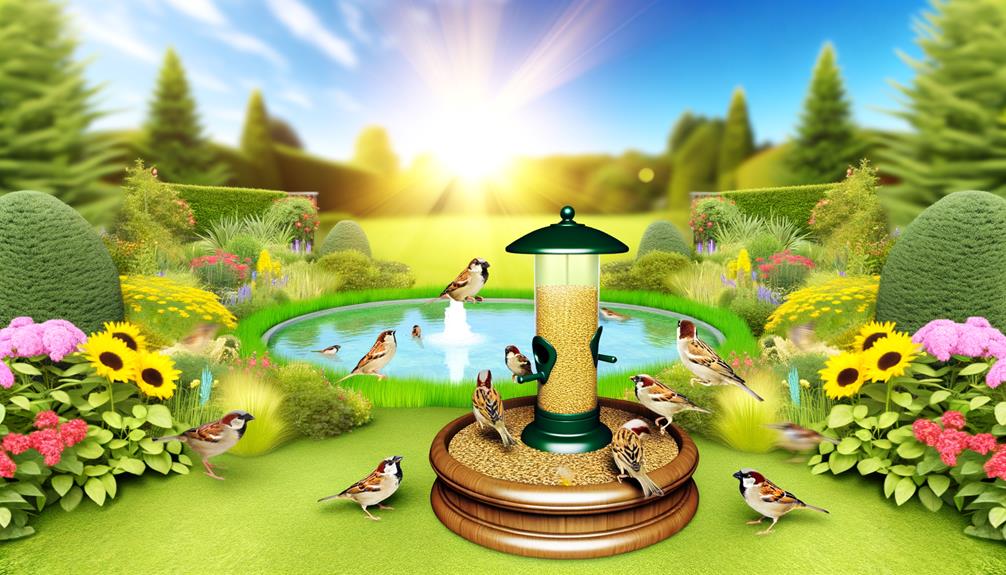
Maintaining the cleanliness of the bird feeder and surrounding area is crucial for upholding a healthy environment for sparrows and minimizing the risk of disease transmission. Regular cleaning prevents the buildup of mold, bacteria, and parasites that can endanger birds. Utilize a diluted bleach solution (1 part bleach to 9 parts water) to disinfect feeders weekly, and rinse thoroughly. Furthermore, tidy the ground beneath the feeder to eliminate spilled seeds and droppings, which can lure rodents and shelter pathogens.
| Task | Frequency |
|---|---|
| Disinfect feeder | Weekly |
| Rinse thoroughly after cleaning | Weekly |
| Clean ground beneath feeder | Daily or as needed |
Following these practices guarantees a secure and welcoming space for sparrows.
Conclusion
To sum up, attracting sparrows to a bird feeder requires a precise combination of the ideal feed, strategic feeder placement, sufficient fresh water, and the creation of an ideal shelter environment.
Maintaining the cleanliness of the feeder is crucial, as even the slightest deviation can deter these sensitive creatures.
By carefully following these scientifically-supported methods, one can transform any backyard into an avian paradise, bustling with the colorful and melodious presence of sparrows.

